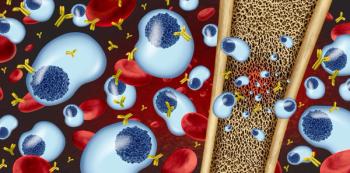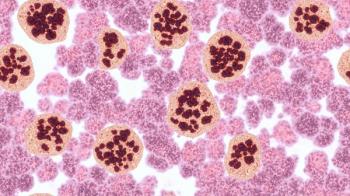
How Technology Can Overcome HIV Treatment Resistance
Lack of adherence to HIV medications can create resistance since the virus mutates quickly.
CRISPR-Cas9, a new gene-editing technology, is being used to pinpoint 3 targets to treat HIV.
The CRISPR-Cas9 team—made up of investigators from the Ragon Institute of Massachusetts General Hospital (MGH), Massachusetts Institute of Technology (MIT) and Harvard and the Broad Institute of MIT and Harvard—determined that gene-editing is an important tool when it is used to identify genes essential for HIV infection, not cellular survival.
“Our goal was to identify human genes, also called host genes, that are absolutely essential for HIV to replicate but could be eliminated without harming a human patient,” explained co-corresponding author, Bruce Walker, MD, director of the Ragon Institute.
One challenge with available HIV medications, which target viral proteins, is that missing a dose could contribute to resistance since the virus mutates quickly. Therefore, if future treatments focus on genes needed for infection to occur, the chances of resistance could go down.
Previous research has examined this area of HIV treatment. Building on that work, the researchers knew that the CD4 molecule (which the virus binds to) and CCR5 (which facilitates the binding of common strains) are required in order for HIV to actual enter CD4 T cells. Further, people with a CCR5 mutation are immune to common HIV strains; however, therapeutic strategies incorporating that understanding cause serious adverse effects.
“Viruses are very small and have very few genes—HIV has only 9, while humans have more than 19,000—so viruses commandeer human genes to make essential building blocks for their replication,” Walker said.
Another past strategy came about based on 3 studies conducted in 2008. RNA interference (RNAi) can block gene expression, but not completely. RNAi can also inhibit other genes unintentionally, which can compromise test results.
“CRISPR makes it possible to completely knock out genes at the DNA level; and our genome-wide, CRISPR-Cas9-based approach targets more than 18,500 genes, the vast majority of human protein-coding genes,” said co-lead author, Tim Wang, PhD student.
The new CRISPR technology allowed the team to identify 5 genes—3 of which that have been identified before—that protect cells from HIV when inactivated. These inactive genes were able to protect against infection without impacting cellular survival. The researchers found that CD4 and CCR5 were involved in the process, as well as TPST2 and SLC35B2 (the genes for 2 enzymes) and ALCAM (loss of this gene resulted in protection).
“ALCAM is necessary for cell-to-cell adhesion in our cell line, allowing more efficient viral transfer from on cell to the next," said co-lead author, Ryan J. Park. "In fact, we found that artificially inducing the aggregation of cells lacking ALCAM restored the cell-to-cell transmission of HIV."
CRISPR-Cas9 was first harnessed for gene-editing in 2013. CRISPR screening could ultimately lead to new treatments for HIV. But this technology doesn’t stop at HIV; the researchers said that it could be used to identify host factors of other viral pathogens.
While there are obstacles to putting gene therapy into action, it can bring clinicians to the next level of treatment. More research is needed to evaluate the toxicity of targeting the 5 mentioned genes.
These findings are receiving advance online publication in the journal, Nature Genetics.
Newsletter
Stay informed on drug updates, treatment guidelines, and pharmacy practice trends—subscribe to Pharmacy Times for weekly clinical insights.



















































































































































































































